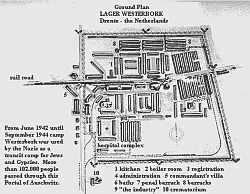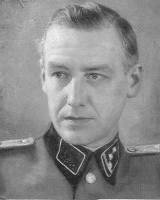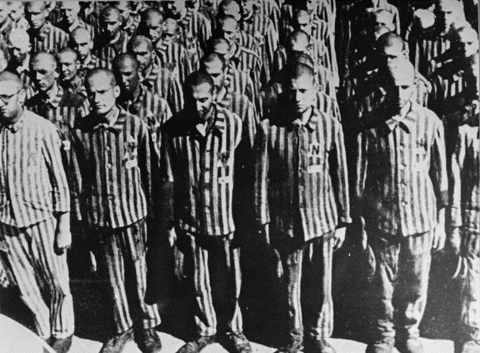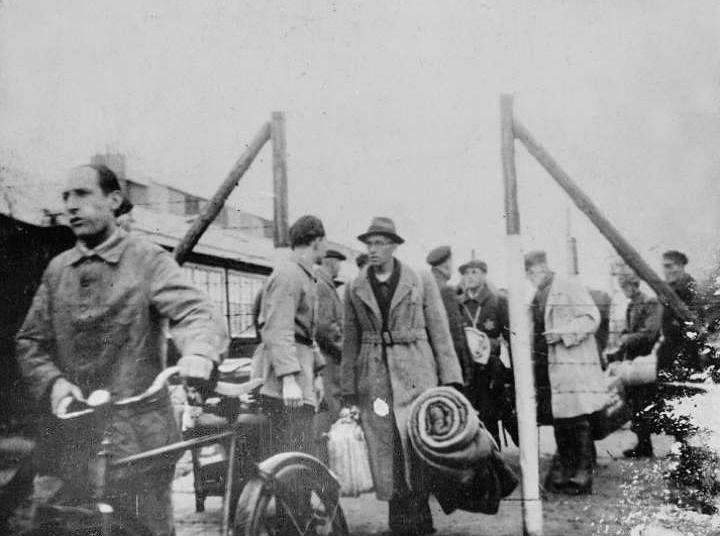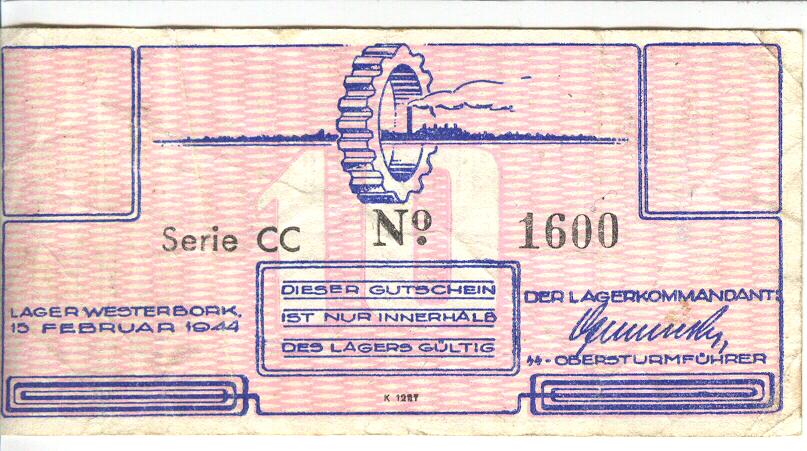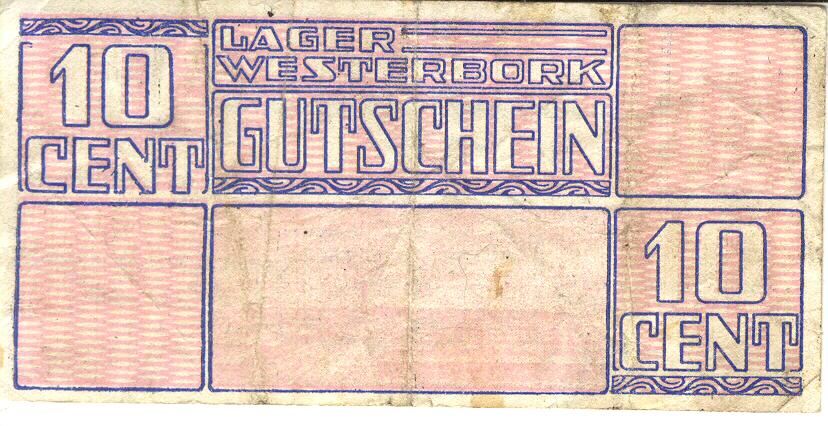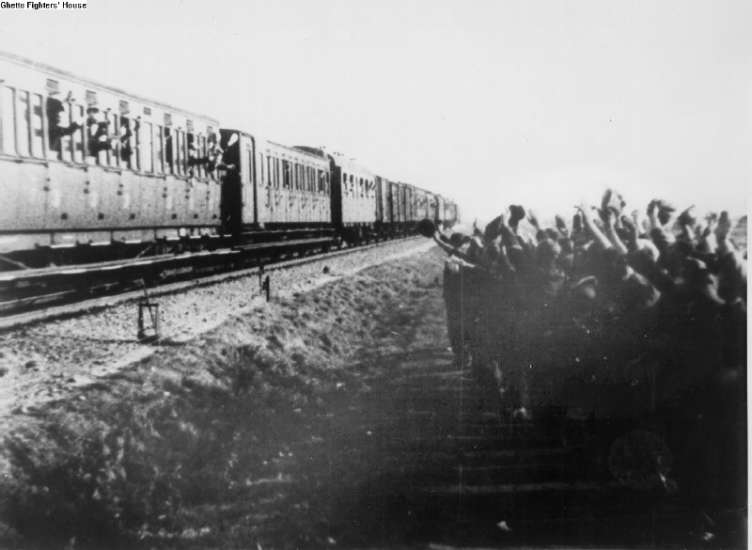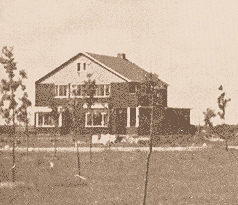Holocaust Education & Archive Research Team |
|
Other Camps
Key Nazi personalities in the Camp System The Labor & Extermination Camps
Auschwitz/Birkenau Jasenovac Klooga Majdanek Plaszow The Labor Camps
Trawniki
Concentration Camps
Transit Camps
| ||||||
Westerbork Transit Camp
The community of Westerbork is situated in the northeast of the Netherlands in the province of Drenthe, 11 kms from the province capital of Assen and about 130 km (80 miles) north of Amsterdam. In a resolution proposed by the Minister of Home Affairs and approved by the Dutch cabinet on 13 February 1939, it was determined to construct a camp "to house the refugees from Germany that live in this country". Opened on 9 October 1939, the costs of constructing the camp, amounting to 1.25 million gulden, were charged to the Jewish Refugee Committee in the Netherlands.
At the end of 1941, the Germans decided that Westerbork would become a transit camp for Jews destined to be deported to the east. Measuring 500x500 m, the camp was surrounded by a barbed-wire fence and 7 watchtowers. 24 large wooden barracks were constructed.
Eventually there were to be 107 such barracks, each designed to hold 300 people. The costs of this building work and of the camp's maintenance were to be financed from the proceeds of confiscated Jewish property, an amount that was to exceed 10 million guilders for 1942/43. During the first six months of 1942, 400 foreign Jews (mainly German and stateless), were transferred to Westerbork from the towns and villages in the Netherlands from which Dutch Jews had been evicted to Amsterdam.
On 1 July 1942, the Befehlshaber der Sicherheitspolizei und des SD took control of the camp, and SS troops arrived to reinforce the Dutch military police guards. Philip Mechanicus stated that the majority of the latter were benevolent and mild in their treatment of the Jewish inmates. (This attitude may have been the reason for their substitution from 1 June 1944 by a company of the special Police Battalion Amsterdam, educated at the Nazi police academy in Schalkhaar.) Erich Deppner, a member of the German administration in the Netherlands was appointed camp commandant, to be succeeded by an SS officer, Josef Hugo Dischner on 1 September 1942. Both men having proved to be equally incompetent, Albert Konrad Gemmeker became commandant on 12 October 1942. Gemmeker left the day-to day operation of the camp in the hands of German Jews, as had been the case from inception, an arrangement which was not to change even when the majority of the inmates were Dutch.
The inmates rarely saw members of the SS other than Gemmeker. On 13 July 1942, most of the people who had lived in the camp, many of them for as long as two years, were dismissed from the camp administration. Those dismissed included virtually everybody who was not deemed purely Jewish by Nazi criteria. One day later all inmates born between 1902 and 1925 were examined on behalf of the Arbeitseinsatz (Work Allocation Department). Deppner explained: "Your labour is also needed for our victory."
The transfer of Jews from Amsterdam to Westerbork began on the night of 14/15 July 1942, and the first transport left for Auschwitz on the following day. In addition, on 15 July the Dutch railroad company Nederlandse Spoorwegen received an order for the construction of a 5 km railroad into Camp Westerbork. The timetable for the trains, their size and destination were determined by Adolf Eichmann's lVB4 office. Gemmeker left the composition of the transports to the Jewish camp leadership (Kampleiding). However, certain inmates, such as those of foreign nationality or veteran servicemen were exempt from transportation.
The Kampleiding consisted solely of German Jews, who had been in the camp from the very beginning and who were called “Alte Kamp-Insassen” (old camp inmates). From Gemmeker’s point of view they were easier to communicate with than the Jews from Holland. The official language in Camp Westerbork was German. Sometimes severe tensions occurred between the Dutch and the German Jews, as the former considered the latter to be rude in their behaviour, with some of them even collaborating with the SS. Beginning on 2 February 1943, deportation trains left Westerbork on Tuesdays, although there were periods in which no deportations took place. Initially transports were in passenger cars; later, cattle wagons were utilised.
Those Jews who had been caught in hiding within Holland were labelled "Convict Jews" and were placed in a punishment block, Barrack 67, in the north-eastern corner of the camp. Unlike other inmates, they were not allowed to keep their own clothes, but were forced to wear blue overalls and wooden clogs. Men and women in the punishment block had their hair shaved, received no soap, less food than other prisoners and were forced to work in the most arduous labour details. The Convict Jews (‘Strafgevallen’) were in general the first to be selected for transportation on the next train for Poland, leaving on the subsequent Tuesday.
Unlike other transit camps, Westerbork maintained a relatively small semi-permanent population who remained in the camp for a considerable time, ran their own affairs and maintained a near-normal life, especially in the periods when there were no deportations. Elie Cohen, a doctor, was in Westerbork for 8 months before being sent to Auschwitz. Whilst never pleasant, conditions in the camp were far more bearable than in the transit camps of eastern Europe, although the water supply was bad, and washing and sanitary facilities were inadequate.
Often the camp was very crowded, “like the last piece of driftwood to which too many drowning people try to hang on after the sinking of the ship” (as described in the famous diary of victim Etty Hillesum). But the great majority of those who passed through the camp only stayed for a few hours or days, or perhaps a week or two before boarding eastward bound trains, despite the Kampleiding's attempts to save people from deportation by providing them with jobs within the camp. For example, prisoners were enrolled in the Ordedienst (Jewish police), or in the Fliegende Kolonne (Flying Brigade), a section who were responsible for ensuring the transfer of deportees to the railway station in the nearby village of Hooghalen, used before the railroad into the camp became operational. The camp administration consisted of twelve subdivisions. On 12 August 1943, one of the subdivision heads, Kurt Schlesinger, was appointed chief of the department dealing with the vital main card index, from which the list of deportees was compiled. A Joodsche Ordedienst (OD, Jewish Police Force), commanded by an Austrian, Arthur Pisk, was also created, with a maximum strength of 200 young men responsible for maintaining order within the camp and at the transports.
Westerbork took on many of the characteristics of a small town. There was a hospital headed by Dr F M Spanier, with 1,800 beds, a maternity ward, laboratories, pharmacies, 120 doctors and a further 1,000 employees. Other facilities included an old people's home, a huge modern kitchen, a school for children aged 6-14, an orphanage and religious services. Workshops existed for stocking repair, tailoring, furniture manufacturing, and bookbinding. There were divisions for locksmiths, decorators, bricklayers, carpenters, veterinarians, opticians and gardeners.
The camp included an electro-technical division, a garage and boiler room, a sewage works, and a telephone exchange. In 1943, when the "permanent" population was at its peak, 6,035 people were employed at the camp, not all of whom were Jewish.
Fear of transport to the unknown east dominated Westerbork and defined the behaviour of many of its inmates. Although no detailed knowledge about the destination of the transports was known, the prisoners were only too aware that the Germans were not planning anything that would prove beneficial to the deportees. In order to keep their names off the transport lists, people would do anything – "sacrifice their last hoarded halfpenny, their jewels, their clothes, their food, or in the case of young girls, their bodies." Doctor Elie Cohen described his own role in this process of salvation: “I had a rather great influence in Westerbork, having become a camp ‘prominent’, and I could keep people away from the transports when I choose to do so, for example my own family. As long as I was in power, to put it that way, I was able to protect my parents-in-law, who had arrived in Westerbork in April. I had a cousin in the OD and he warned me on Sunday or Monday: `Elie, Mom and Dad are on the transport list.’ Then I answered, `Well, let’s get them to the hospital.’ I had influence on the doctor at the Intake Department, and via that fellow one was taken in to the hospital so that their partner was also ‘gesperrt’.” (Dr. E.A. Cohen, De afgrond / The Abyss).
As each Tuesday approached, every inmate had to endure the trauma of possible deportation. A single example of the horrific nature of these transports will suffice. Eyewitness, Philip Mechanicus, a renowned journalist and author of a camp diary, recorded the following:
"The train, a long scabby snake that cuts the camp in two. The 'Boulevard des Misères' (the main street in Camp Westerbork) where it stands, blocked by O.D. men to keep out everyone who is not needed there, and then the people, packed with a bread-bag hanging from their shoulder, a rolled blanket bound to the other side with a piece of rope swinging on their back. Shabby vagabonds who own nothing but the clothes they wear and what's hanging from them. Men with silent, stiff faces, women often in tears. Older people, stumbling over the bad road, through pools of mud. Patients on stretchers, carried by O.D. men. At the platform the big chief Gemmeker himself, usually with his little dog, the green police, a number of prominent inmates among whom is Schlesinger, in riding-breeches and boots, with straw coloured hair and wearing a flat cap."
Gemmeker remains an enigmatic figure. He rarely raised his voice or dealt out punishments to the prisoners, and was said to be incorruptible. He took an interest in the camp's entertainments and afterwards joked with the performers. Jewish gardeners cultivated flowers for him and he was treated by Jewish doctors and dentists. Yet on Tuesdays he stood quietly watching the trains depart for the east. Gemmeker had a film made in Westerbork which was to show everything, good and bad, of the camp's daily life.
Scenes from the film appear frequently in Shoah-related documentaries. One particularly haunting image from the film, that of a 9 year-old girl staring from the doorway of a cattle wagon, has become synonymous with the Holocaust. The girl, who was in fact not Jewish, but Roma, was named Settela Steinbach. She perished in Auschwitz-Birkenau.
In Memory of Sylvia Sztycer (1940-1943) Early 1943 the Sztycers were interned in KZ Herzogenbusch (Camp Vught). Mother and children are on the infamous Children's Transport (6 June 1943) to Durchgangslager Westerbork, where they stay for 5 weeks. From the camp diary of Philip Mechanicus: "In the infirmary barracks some 50 children who arrived from Vught, are suffering from scarlet fever, measles, pneumonia and mumps." On 13 July 1943, Sylvia together with her mother and brothers were deported to Sobibór, where they were gassed on the 16th.
Westerbork Departure Photo - GFH
Copyright H.E.A.R.T 2007
|

